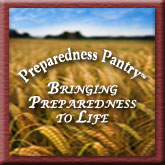Today’s topic is somewhat serious. Most people know someone who has been diagnosed with ‘fibromyalgia,’ including me. The diagnosis is applied to an odd array of symptoms that include chronic, constant muscle pain, insomnia, irritable bowel, and a cornucopia of other symptoms that on any given day range from annoying to debilitating. I occasionally reflect on the methodology used for the diagnosis and get really annoyed. Fibro is a ‘rule-out’ diagnosis, and some things don’t get ruled out, or did not in my case. I suffered for several years at a level that was completely unnecessary because of it. Physicians have differing reactions to both the symptoms and the diagnosis. Some do not believe it exists, others use it as a garbage can term for things that aren’t easily diagnosed and don’t seem to be life-threatening. Once diagnosed, everything gets attributed to the fibro unless you are really ill, which gets frustrating and can threaten your health.
For the uninitiated, the ‘rule-out’ process entails tests for the big-hitters of the primary symptoms of fatigue, wide-spread muscular pain and a loss of mental acuity. It usually comes on rather suddenly and after a week, one begins to notice that the ’bug’ remains. In my case I went to the MD after about 8 weeks of it. Diagnosis took a month. The good news was that it was not lupus, rheumatoid arthritis, Epstein-Barr/mono, hidden infection, hemachromatosis, or multiple sclerosis. Whew! Nice not to have any of those, but that seemed to lead to “Congrats, you have fibro. Here are some pills to deal with the pain and some ritalin for your brain. Have a nice life.”
In the decade since my diagnosis, I have discovered some odd things that were not ruled out were the simple causes of some of the symptoms. This has helped either me or other sufferers I know. The first was help I inadvertently gave a fellow sufferer, whom I’ll call Sherri. She is a wonderful, vibrant person who is a whiz with native desert plants, which was how I met her. She had to quit her life’s work in the native plant nursery business due to her worsening fibromyalgia. She later worked for me in a part-time position that was near her passion, but not quite. I was struggling with a specific fibro treatment that provided some relief, but was onerous in practice. Part of the treatment was to avoid any substances that introduce a class of chemicals called ‘salicylates’ into your body. That’s incredibly challenging. Today, virtually every plant makes them and most soaps, shampoos, lotions, etc. have the extracts in them. Fruit is OK, but leaves, stems and roots or the extracts from them must be avoided. Sherri and I discussed the treatment and she had an idea: she was very allergic to aspirin, the salicylate ‘salicylic acid’. Could she be so allergic that her contact with her beloved plants and botanical body products were the culprit? Her experiment at avoiding the offending class of chemicals was a huge success. She transformed in a few weeks. She still had some lingering health problems, but was pretty sure she did not have fibromyalgia – whatever that is.
I, too have had some ah-ha’s that have significantly reduced the pain I experience on a daily basis. Most recently was an experience akin to Sherri’s. I had long known I am allergic to chili peppers. One rally good enchilada and I am rewarded with 8 hours of excruciating gastrointestinal distress and 3 days of flu-like symptoms. I have mentioned this to every MD I have seen for the last 20 years. Not one of them every reacted in any way other than to write it down on my record jacket. About 8 weeks ago, I looked up ‘chili allergy’ on Google and started surfing. There is no such thing, BUT there are people who are missing the enzyme to process ‘solanine’ a somewhat poisonous alkaloid (chemical) that occurs naturally in members of the nightshade family. You think that is somewhat obscure? Nightshades make up about 25% of the American diet: tomatoes, potatoes, all forms of peppers (red, black, yellow, chili, etc.), eggplant and tomatillos being the most frequently encountered. So I stopped eating any of them. Within 5 days my need for pain medication diminished by about 30%. What is with the medical establishment that something this simple was so elusive?
Another step-function decrease in my fibro pain resulted after reading a book about the anti-inflammation zone by Dr Barry Sears. I’ve long since given it away, but the bottom line is that the oils we use in our foods are not created equal. In some people, some of them actually create chemicals in our bodies that cause high levels of inflammation, which can lead to widespread pain. To reduce the inflammation, many types of oil need to be gone from our lives. No more corn oil, crisco, etc. Strict adherence to olive and canola oils with an occasional pinch of peanut oil or butter will make a huge difference. When in combination with a healthy daily dose of pharmaceutical grade omega 3 fish oil, there went another 20% of the pain meds. If you are somewhat serious about looking into this, you need to read his book to do it right.
Remember reading about RICKETS way back in school? It's also known a vitamin D deficiency. Well, apparently it is more common these days -- not full blown, but subtle borderline deficiency in office workers and others who only see the sun on weekends. If you are having odd pain in your limbs, get your vitamin D level checked. Mine was extremely low. I now take one 50,000 unit vitamin D a month and there went another 5% of my pain meds!
More next time on how I survive the pain of travel, and gentle was of getting sleep despite the insomnia that comes with fibro.
Getting prepped
2 years ago



